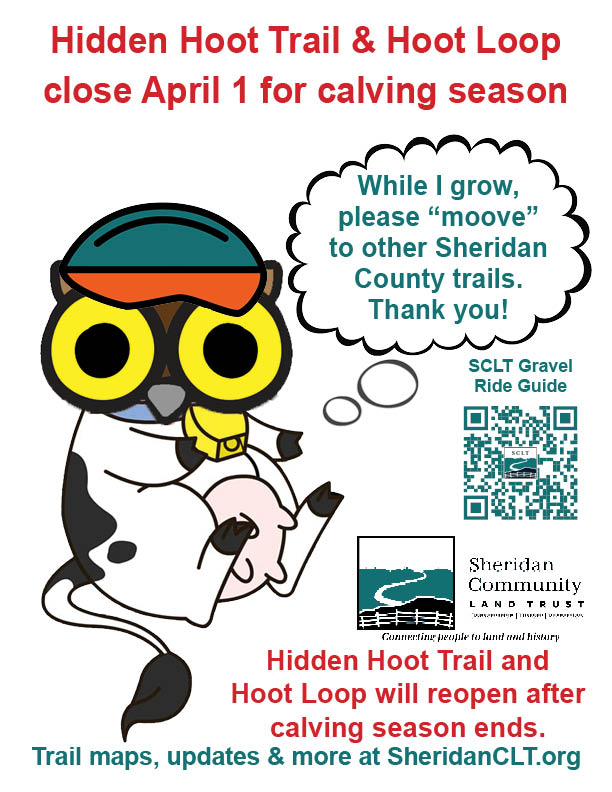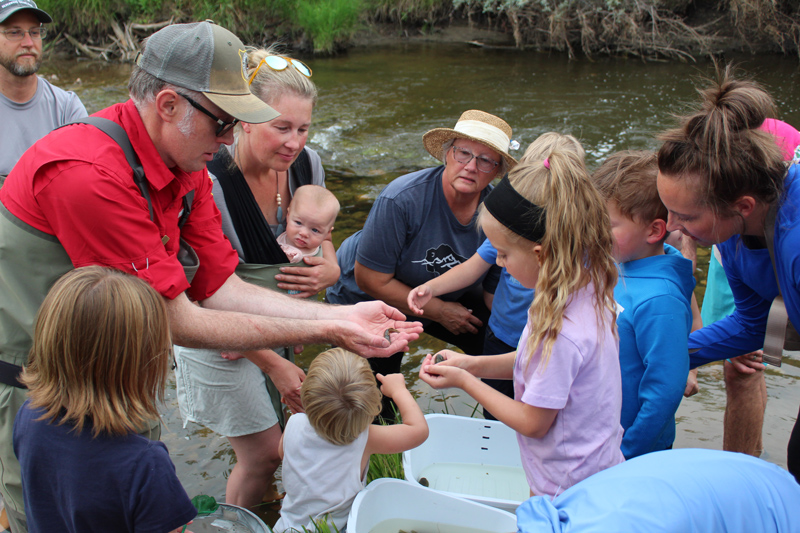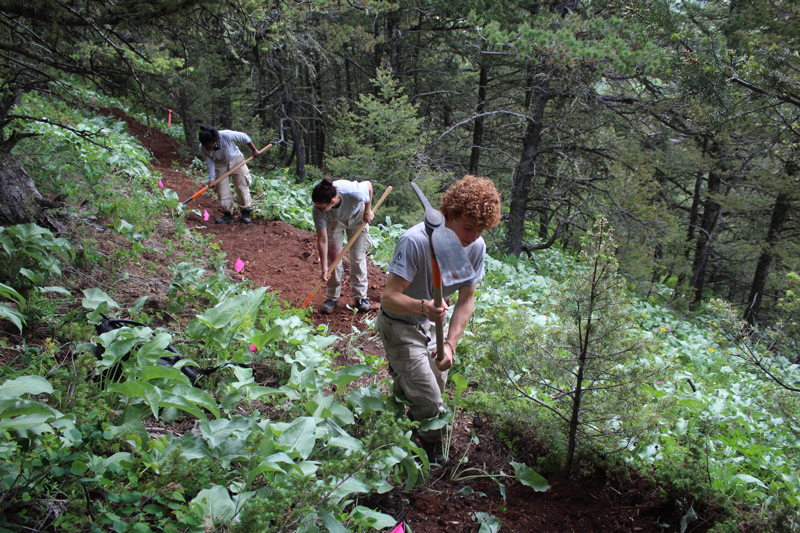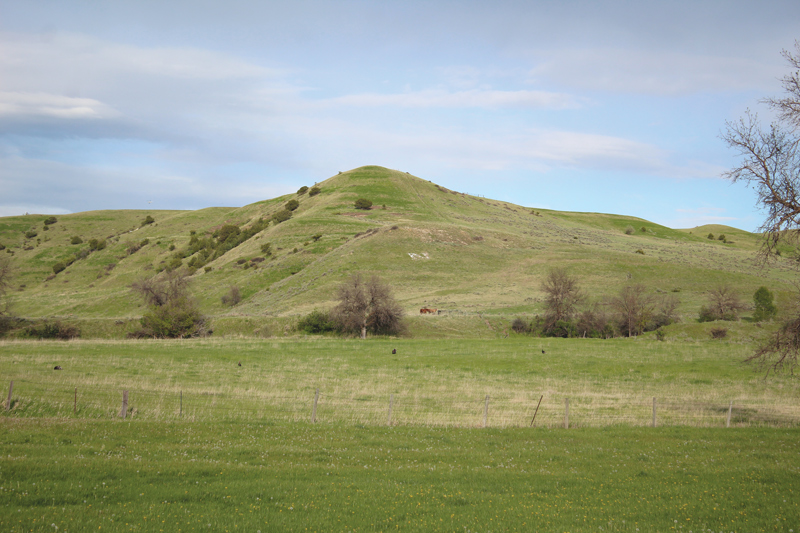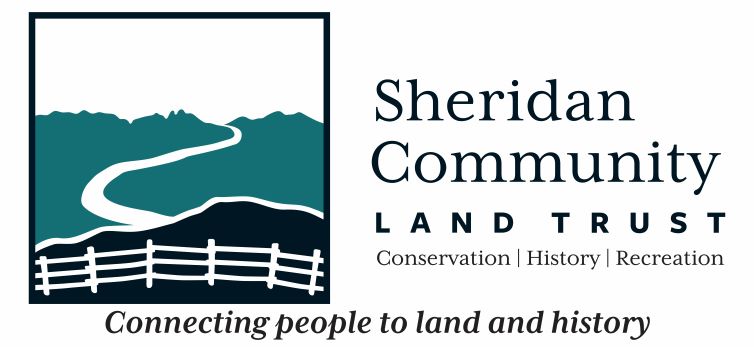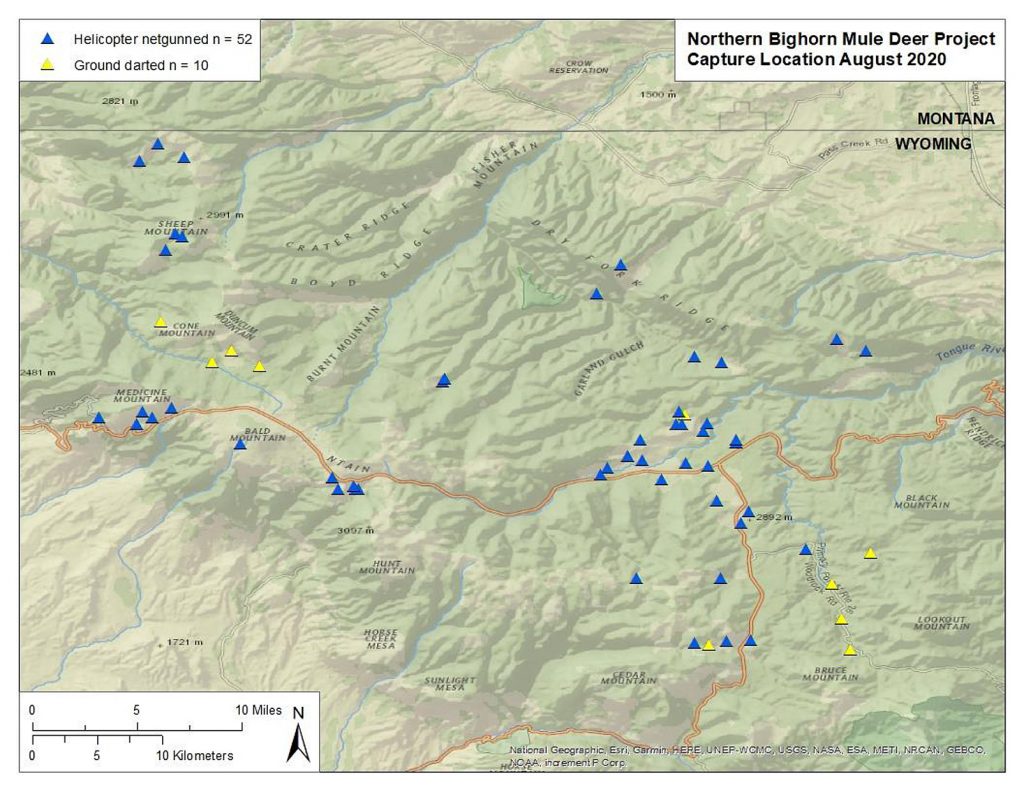
Locations where 62 mule deer were captured and collared (below) in the Bighorn National Forest this summer.
by Carrie Kyle, Graduate Research Assistant, Kauffman Lab, Wyoming Cooperative Fish & Wildlife Research Unit
Healthy mule deer herds are essential to sustaining the ecological, economic and cultural values of our western landscapes. The productivity of these herds depends on their ability to move seasonally across vast expanses of public and private lands. In the Bighorn Mountains, mule deer movements have not been studied with GPS collars, thus their movements and seasonal ranges are largely undocumented. That is, until now.
A multi-agency and organization collaboration has undertaken work to close that data gap to help stakeholders identify mule deer movements in the northern Bighorn Mountains, evaluate seasonal range and habitat use, identify habitat improvement and conservation opportunities and document vital rates for the herd.
In August, 62 mule deer does were captured and collared on summer range in the northern Bighorn National Forest, in additional to 25 does collared on winter range in March. Though there were several mortalities due to predation, natural causes and capture, 83 collars are successfully transmitting locations. A winter capture event will allow researchers to deploy a goal of 130 collars by March 2021.
The project has received generous financial support from the Knobloch Family Foundation, Mule Deer Foundation, The Nature Conservancy, Wyoming Game and Fish Department, Wyoming Wildlife and Natural Resource Trust, Department of the Interior Secretarial Order 3362, Muley Fanatics Cody Chapter and SCLT.
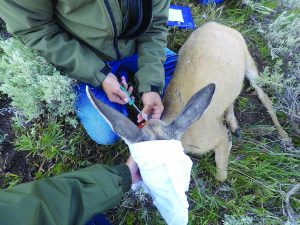
DCIM101GOPROGOPR5342.JPG
How has SCLT helped?
SCLT has worked with project partners to make this tremendous project possible in a number of ways. SCLT has secured $20,000 in funding and the efforts of citizen scientists this summer through the iNaturalist app aided collaring efforts. Going forward, our hope is that the data will help direct future SCLT conservation projects.

